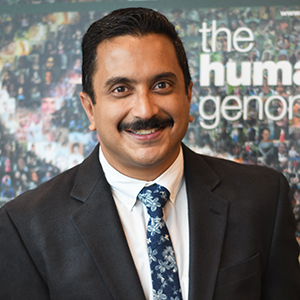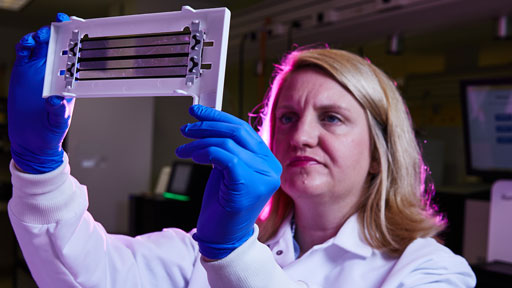Sen SK, Green ED, Hutter CM, Craven M, Ideker T, Di Francesco V. Opportunities for basic, clinical, and bioethics research at the intersection of machine learning and genomics. Cell Genom. 2024 Jan 10; 4(1): 100466. [PubMed]
Schatz MC, Philippakis AA, Afgan E, Banks E, Carey VJ, Carroll RJ, Culotti A, Ellrott K, Goecks J, Grossman RL, Hall IM, Hansen KD, Lawson J, Leek JT, Luria AO, Mosher S, Morgan M, Nekrutenko A, O'Connor BD, Osborn K, Paten B, Patterson C, Tan FJ, Taylor CO, Vessio J, Waldron L, Wang T, Wuichet K., AnVIL Team. Inverting the model of genomics data sharing with the NHGRI Genomic Data Science Analysis, Visualization, and Informatics Lab-space. Cell Genom. 2022 Jan 12;2(1):100085. [PubMed]
Rosshart SP, Herz J, Vassallo BG, Hunter A, Wall MK, Badger JH, McCulloch JA, Anastasakis DG, Sarshad AA, Leonardi I, Collins N, Blatter JA, Han SJ, Tamoutounour S, Potapova S, Foster St Claire MB, Yuan W, Sen SK, Dreier MS, Hild B, Hafner M, Wang D, Iliev ID, Belkaid Y, Trinchieri G, Rehermann B. Laboratory mice born to wild mice have natural microbiota and model human immune responses. Science. 2019 Aug 2;365(6452). [PubMed]
Johnston JJ, Williamson KA, Chou CM, Sapp JC, Ansari M, Chapman HM, Cooper DN, Dabir T, Dudley JN, Holt RJ, Ragge NK, Schäffer AA, Sen SK, Slavotinek AM, FitzPatrick DR, Glaser TM, Stewart F, Black GC, Biesecker LG. NAA10 polyadenylation signal variants cause syndromic microphthalmia. J Med Genet. 2019 Jul;56(7):444-452 [PubMed]
Harrison OJ, Linehan JL, Shih HY, Bouladoux N, Han SJ, Smelkinson M, Sen SK, Byrd AL, Enamorado M, Yao C, Tamoutounour S, Van Laethem F, Hurabielle C, Collins N, Paun A, Salcedo R, O'Shea JJ, Belkaid Y. Commensal-specific T cell plasticity promotes rapid tissue adaptation to injury. Science. 2019 Jan 4;363(6422) [PubMed]
Ma C, Han M, Heinrich B, Fu Q, Zhang Q, Sandhu M, Agdashian D, Korangy F, Terabe M, Berzofsky JA, Fako V, Ritz T, Longerich T, Theriot CM, McCulloch JA, Yuan W, Thovarai V, Sen SK, Ruchirawat M, Wang XW, Trinchieri T, Greten TF. Clostridium species control liver cancer via bile acids/CXCL16/CXCR6 mediated NKT cells. Science 2018 May 25;360(6391) . [PubMed Central]
Linehan JL, Harrison OJ, Byrd AL, Han S-J, Villarino A, Sen SK, Rosshart SP, Smelkinson M, Tamoutounour S, Bouladoux N, Wang C-R, Brenchley JM, Kristie TM, Rehermann B, Trinchieri G, O’Shea JJ, & Belkaid, Y. An ancient arm of adaptive immunity controls microbiota impact on skin immunity and tissue repair. Cell 2018 Feb 8;172(4):784-796 . [PubMed]
Sen SK, Boelte KC, Barb JJ, Joehanes R, Zhao X, Cheng Q, Adams L, Teer JK, Accame DS, Chowdhury S, Singh LN; NISC Comparative Sequencing Program; CHARGE Consortium, Kavousi M, Peyser PA, Quigley L, Priel DL, Lau K, Kuhns DB, Yoshimura T, Johnson AD, Hwang SJ, Chen MY, Arai AE, Green ED, Mullikin JC, Kolodgie FD, O'Donnell CJ, Virmani R, Munson PJ, McVicar DW, Biesecker LG. Integrative DNA, RNA, and protein evidence connects TREML4 to coronary artery calcification. Am J Hum Genet. 2014 Jul 3;95(1):66-76 [PubMed]






